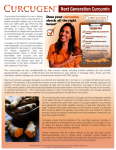Peek inside Probiota 2016: Amsterdam, February 2-4
What’s fermented food and can it help make probiotics sexy?

Research around probiotic fermented foods has been mounting in recent years – but this is yet to translate into consumer understanding, says Amanda Hamilton, director of nutrition for the start-up Rhythm Health.
Founded in 2008, Rhythm Health combines coconut milk, fruit juices and kefir cultures to make lactose-free fermented probiotic drinks and yoghurts.
Using kefir cultures, the products contain lactic acid bacteria, including Lactobacillus Acidophilus.
Yet Hamilton said not everybody was aware of the potential health benefits of fermented foods.
Asked what the term ‘fermented’ meant to the majority of consumers, she said: “I think it means beer! I don’t think people know what fermented means.”
She said this ultimately depended on the audience.
“I don’t think it means an awful lot yet. But in the actual consumer health press especially in the UK and over in the States they are talking a lot about it especially about sauerkraut and kimchi and all that kind of stuff.
“But it’s quite niche and what we’re try to do is make it non-niche by having it in a much easier form to get your head around compared to sauerkraut perhaps.”
At our 2015 edition of the event Probiota a provocative question was asked: Why don’t we make probiotic foods sexy?
In Probiota 2016, Hamilton will take us through how she thinks this can be achieved using Rhythm Health as a case study.
Fermented investigation
Earlier this year a study published in the journal Psychiatry Research suggested increasing consumption of fermented foods may be associated with fewer symptoms of social anxiety, particularly in people at higher genetic risk.
Fermentation in a process whereby carbohydrates are converted to alcohols and carbon dioxide or organic acids using yeasts and/or bacteria under sealed conditions.
Speaking with our sister publication NutraIngredients-US at the time, one of the authors said: “It is likely that the probiotics in the fermented foods are favourably changing the environment in the gut, and changes in the gut in turn influence social anxiety.”
A separate study published last month suggested fermented foods like kimchi and beer may reduce the risk of eczema.
The research suggested consumption of fermented Korean foods over 92 times per month was associated with a 44% lower prevalence of eczema in about 10,000 Korean adults.
They said lower consumption of fermented foods in westernised dietary patterns was likely to be behind the increased prevalence of atopic dermatitis.
Hidden benefits
Hamilton said translating this ‘whole body’ impact of probiotics seen in research into marketing would likely increase the appeal of probiotics for consumers.
“The whole issue with the gut is that it is a very hidden benefit. You’re looking at something that happens deep inside you and in not ultimately a very exciting part of the body to talk about for most people and is not going to give you an ‘instant hit’,” Hamilton told us.
Research emerging on how gut microbiota may impact health throughout the body – from immune health to mental health to weight management – was now “bringing to life” the wider impact of gut health in the mind of the consumer.
For consumers this meant “you’ve got to get the gut right first”, she said.
But in order for those facts to get to the consumers, the probiotic and fermented food industry needed “ambassadors” and this was likely to come in the form of nutritionists and food bloggers, she said.
Rhythm Health's products were already available in Whole Foods Market, Holland & Barrett, As Nature Intended and Planet Organic as well as independent health food stores and spas, which she said played a key role in spreading the word.
The company was now considering expansion into the US, Scandinavia, Spain and Turkey.
It aims to have a turnover of about £1.5m (€2.07m) next year - up from the current estimated £750k (€1033k).
Making probiotics attractive
‘Fridge-friendly’ appealing foods that were “pleasurable and fun” to consume were also the key to success, she said, particularly given the limitations of communicating on probiotics in Europe.
“We’ve had to make the products in themselves attractive as standalone products.”
This wasn’t about making the health benefit secondary but dealing with the reality of marketing constraints as well as a consumer divide between people seeking the health benefits alone and those seeking a ‘sexy’ product that also had a health benefit.
Pre- and probiotics will be discussed at Probiota 2016 in Amsterdam on February 2-4.
From zombie probiotics to the future of microbiome science; global hotspot market wraps; infants and the aged; case studies; latest research and formulations plus regulations, Probiota 2016 is a knowledge store you probably shouldn’t miss.
Click here for more.



















